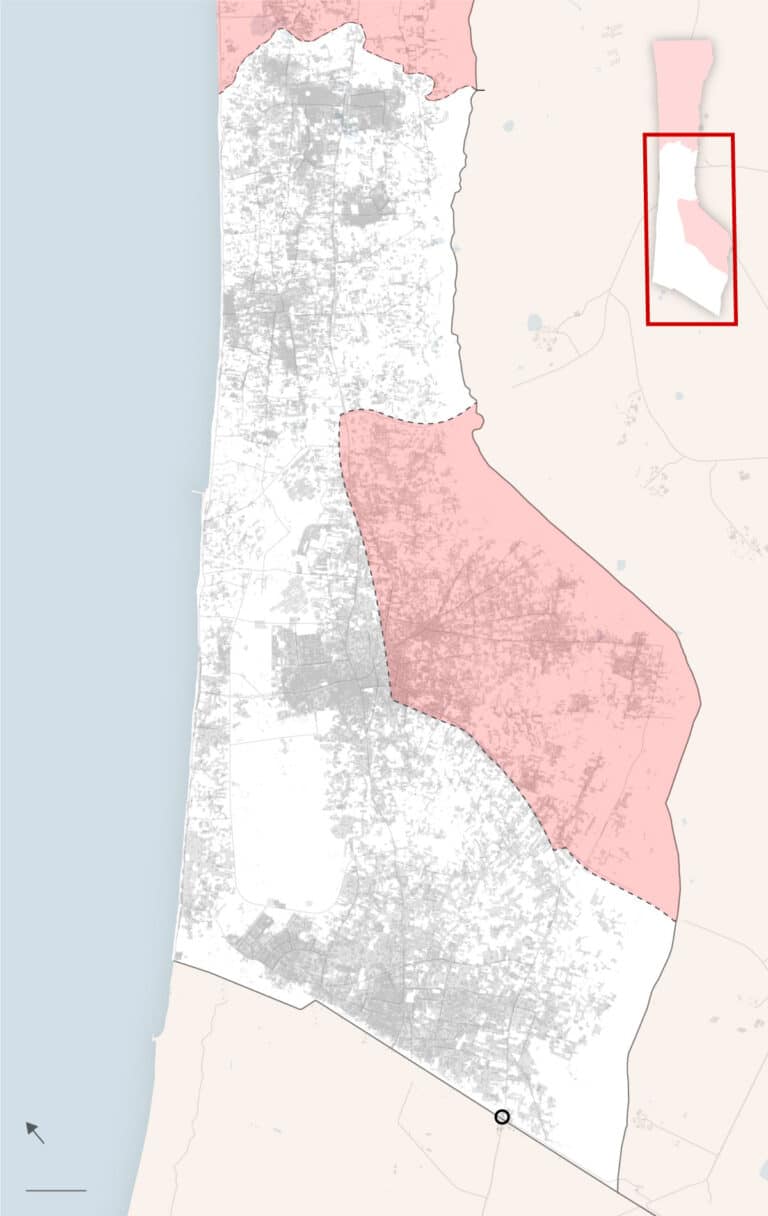The Israeli military bombarded southern Gaza on Saturday and ordered residents of several Palestinian border towns in the area to leave their homes, appearing to set the stage for a ground invasion in the south as hostilities resumed after the collapse of a weeklong truce with Hamas.
The Israeli demand for evacuations evoked similar orders the military gave before invading northern Gaza in late October, and it added to the fear and uncertainty hanging over Gaza’s 2.2 million people as a new phase appeared to begin in the nearly two-month war.


The Israeli military said in a statement that it had struck more than 50 locations in and around Khan Younis, the largest city in southern Gaza, where hundreds of thousands of displaced people have been sheltering after being told to leave the north. The Gazan interior ministry said that Al Qarara, a nearby town, was also hit.
The Gazan health ministry said in a statement on Saturday afternoon that 193 people had been killed in the “past hours.” It said that Israeli strikes on Gaza since Oct. 7 — when Israeli forces began retaliating for Hamas-led attacks in Israel that the Israeli authorities say killed about 1,200 people — had killed a total of more than 15,000 people.
The Israeli military also hinted that its troops had begun to operate in southern Gaza overnight, after weeks of fighting on the ground only in the north of the territory. In a statement, the military said that naval troops “carried out a targeted operational activity in the Khan Younis marina and Deir al-Balah,” two coastal sites south of the area that Israel has already captured from Hamas. A military spokesman, Lt. Col. Peter Lerner, said the troops had not set foot on the shore.
Air-raid sirens sounded in parts of southern Israel throughout the day on Saturday, indicating that armed groups in Gaza had fired rockets or shells into Israeli airspace. There were no immediate reports of damage.
The Israeli military signaled separately that more operations were imminent in both northern and southern Gaza. It warned residents of Al Qarara and villages next to the border with Israel to head farther south, and ordered some residents in and around Gaza City, a city in northern Gaza, to head west.
Some Palestinians near Khan Younis said Friday that Israeli military aircraft had dropped leaflets directing people to evacuate to shelters in the area of Rafah, a city along Gaza’s border with Egypt. The leaflets, which had the insignia of the Israel Defense Forces, declared Khan Younis “a dangerous combat zone.”
Israeli ground forces have already captured parts of northern Gaza, and Israeli officials have said for weeks that their infantry aims to advance across all of the north and to head south toward Khan Younis.
The southern villages that were ordered to evacuate on Saturday are between the Israeli border and Khan Younis, suggesting that Israeli forces may be preparing to advance through them during an invasion of the south. They include Al Qarara, Bani Suheila, Abasan and Khuza’a.
About 1.8 million Gazans — more than three-quarters of the people living in the territory — have already been displaced by the war, according to the United Nations, and many say there is nowhere left for them to seek refuge. Still, by early afternoon Saturday, crowds of residents of Al Qarara had begun to flee south, some of them displaced for the second time since the start of the war.
Israel has been telling civilians to head to the area of Al-Mawasi, a southern town that Israel says will escape the brunt of the fighting, or parts of Rafah. But some residents have been reluctant to move south because strikes continue in Rafah and there are few places to take shelter in both Rafah and Al-Mawasi, as well as shortages of fuel, water and food.
A senior Israeli official, who spoke on the condition of anonymity to discuss wartime strategy, signaled that the next phase of the war would not be a drawn-out campaign. Israeli forces, he said, expect to be “in a high-intensity operation in the coming weeks,” and then would probably shift “to a low-intensity mode.”
Palestinian armed groups in Gaza, especially Hamas, still hold roughly 150 hostages, most of them


